Next Steps
What are we doing well in our schools?
And how can we improve?
We need to emphasize what’s working, while also committing ourselves to take action and address what’s not working in our classrooms and on our campuses.
No matter the specific issues our students encounter, from cultural incompetence to a lack of representation, we can engage in new practices and ways of thinking that bring real, immediate change. We’re presented with a powerful opportunity to redefine our learning spaces, to reshape our cultural contours and ensure that everyone is accounted for, welcomed, and made to feel safe and ready for success.
Like the Student Voices Series itself, schools and school communities need to engage in a restorative manner with students to elevate their voices.
Some tangible practices include:
Define your school’s culture collaboratively, working with educators, students, and families to establish a truly representative school identity.
School-Based Forums — replicate the Student Voices Forums in your own school community.
Develop a Student Consulting Cohort — a broad coalition of students, representing a wide range of experiences, equipped with training and cultural standards, can become a powerful collaborator for educators, improving the learning and school experience for all.
http://gse.hightechhigh.org/unboxed/issue15/student_consulting_disrupting_ student-teacher_hierarchies/
https://www.edweek.org/teaching-learning/opinion-students-as-consultants- reframing-teacher-student-relationships/2016/08
Shadow a Student — see the school experience through your students’ eyes, developing new insights and deeper empathy that can translate into revisions and adaptations that expand the availability of classroom success for more students.
https://dschool.stanford.edu/shadow-a-student-k12
Empathy Interviews — like shadowing a student, empathy interviews give educators a greater understanding of what students are really experiencing at school and in the classroom.
https://www.hightechhigh.org/teachercenter/change-packages/empathy- interviews/
Institute an Ethnic Studies Curriculum
This is a cross-cultural problem; students know little about their fellow students’ ethnic backgrounds, cultures, and perspectives, which leads to breakdowns in understanding one another. And this gap in our education leads not only to ignorance but also to a bigger humanitarian problem. The creation of an ethnic studies curriculum is one step in the process of addressing this challenge.
“ I think it should just be normalized to just include history about all different cultures, not just white culture because I know another thing, I know nothing about Mexican culture. I know nothing about Indian culture. I know nothing about anyone’s culture, really, except for white culture.”
“It’s so important to have an ethnic studies department, we would be able to teach these upcoming alumni, our future, that a Black Lives Matter movement is not political. It’s not something it’s not even a discussion. It’s just a fact. Black Lives Matter. Black lives do not matter at this moment in time, black lives have not mattered from 400 years back to now, point being Black lives still do not matter.”
“In my history class last year we were studying WWII. World War II took place not only in Europe but in Asia as well, yet all I remember learning about was the events that took place in Europe because they’re more emphasized I think. The “world” isn’t just Europe.”
To start the process of implementing an Ethnic Studies program:
Access resources online through the State of California
Contact districts who’ve implemented a program, such as Santa Rosa City Schools and Healdsburg Unified School District
Engage your community in the process of adopting a curriculum
Give marginalized groups a say in what’s going to be taught
Expand Counseling to Encompass A Broader Range of Experiences
“Until I went to college... I didn’t understand why I was so aggressive coming to school every day, just mad, for no reason. Just simple microaggressions that were adding and building, and adding and building. Having a counselor that understood. Soon as I walked in, she said, ‘Girl, what’s wrong with you? Come sit down and talk to me.’ Just that, I almost broke down crying.”
Our students believe Sonoma County schools should commit to building up a counseling infrastructure that addresses the deeper struggles of kids traumatized by systemic racism.
Through professional learning, and investment in trauma-informed care, and representational hiring practices, school counseling can tackle implicit bias and expand to be explicitly anti-racist.
Ensure that your school’s counseling program is accessible to anyone who wants it and that your program addresses the deeper struggles of students traumatized by systemic racism:
Anti-racist counseling
Implicit-bias training
Trauma-informed Care
Commit to Enhanced Safety for All
“ I feel now more than ever... just being in America. It’s a scary thing to be a person of color. ”
Our students spend a huge portion of their lives in our schools — we have an obligation to help them feel safe in their own skin. But some students of color feel scared in America. Others feel compelled to find ways to protect themselves from educators because they don't trust them to be sensitive to racial bias. It’s clear we need to commit to enhancing safety for all students.
“Something that happens subconsciously is that we have a checklist of teachers. So when something happens, like something bad or some experience where the teacher just doesn’t acknowledge you, you kind of check that box for the teachers subconsciously, like, ‘Oh, I can’t talk to that teacher.’”
This new standard of safety starts with an examination of the policies and practices already in place in your school community. An audit can unearth what’s helping everyone and what might be holding some students back, making them feel unsafe and unwelcome.
Specifically, let’s consider:
Bullying policies
Campus policing efficacy assessment
Student surveys
Investment in restorative practices
Community building
Increase student input and buy-in
Culturally Relevant Schooling
Students highlighted the need for schools to be more inclusive and culturally relevant. From fostering open, effective communication to expanded and updated curriculum, they offered their ideas on how schools can embrace and engage with students of color.
“It’s important to always build a connection, to understand their background and history. Everybody needs that support. ”
“The ability for schools to reach out to parents needs to improve. Make time for parents at different times in the day. Take the time to really understand the lifestyle of the parents and the family.”
“It has to come from getting a lot more students involved in leading activities or creating their own groups. Groups where people can feel safe and learn about one another’s culture without ever being in a disrespectful manner.”
“Don’t frown upon a lack of English understanding. It’s not that they don’t want to learn. They don’t know everything you’re saying, they have to fill in the gaps for themselves. We’re trying very hard to learn and move ahead. We need to be able to learn more about these cultures and communities that came before. We don’t learn about the colonized, we learn about the colonizers. It’s our history, it’s important to us, we have a right to know about it. ”
“Faculty can make a change slowly by having class discussions about Privilege and Identity, in spaces where kids, teens, and even adults can respect, support, and allow peers to make emotional and mentally challenging risks : Teachers can address defensive feelings, help us develop understandings of ourselves and others...
Faculty can have students evaluate their Identities by asking questions like, Which identities are most essential to you and the environment you live in? What do you like or gain from those/ certain identities? What do you wish people knew about a certain identity: Those questions open up the opportunity for us to understand all social groups have valuable qualities...
Which identities are you more or less aware of and why? How do your different identities affect who you are, your experiences, and how you see the world: This shows everyone how some are/aren’t at a systematic advantage and allows one to put themselves in somebody else’s shoes without bias...
Have students think about attitudes, behaviors, prejudices, stereotypes, and gender-appropriate behaviors they’ve seen acted out towards people or races besides them: Making sure every student realizes everyone has been socialized to have changed views of each other: Making students and faculty more aware of bias that goes on due to personal and cultural experiences of oppression...
PLEASE Teach kids Privilege does not mean somebody is a better person or a bad person. Privilege is all about Access. Minorities are more inclined to have societal disadvantages with things like housing, job access, medical help, and much more. By teaching kids what privilege is in a controlled environment It stops us from using shame and defensiveness to ignore topics that need to be discussed to form a better understanding and society in our future.”
To engage with culturally relevant learning, we recommend the following, including resources:
Recruit a diverse teaching body that reflects student makeup
Assess recruitment policies to reflect diversity
Sign the Sonoma County Equity in Education Initiative pledge, let your community know that you’re committed to anti-racism in our community and equity for all in our classrooms
Emphasize Holistic, Empathetic Professional Learning
“In the classroom, addressing and talking about problems is critical... how an educator addresses and talks about the racial problems in a classroom. Firstly, I think it’s important to keep in mind that none of this is really political because racism has been present long before the Constitution, let alone public schools. So I think educators should firstly educate themselves... so that they themselves may clearly fathom that their black and brown students might have it much harder in the real world. ”
Schools can support teachers and staff in developing the confidence, skills, and understanding to support students of all races, ethnicities and backgrounds. This may be accomplished through developing curriculum and measurable standards, but we know it can’t simply be another “thing” for staff to keep in mind.
And what about the broader community? Finding ways to extend the conversation to parents and the community at large could help the entire region learn and grow together.
Consider the following professional development for educators:
Anti-racist Training
Courageous Conversations
Unconscious Bias Training
Self-care
Solutions need work.
The students who participated in our first Student Voices Forums brought up a host of great ideas that they believe will help solve the challenges they face in terms of racism and inequity. But those solutions will only be effective if we all work together to make them a reality. We invite you to help — by participating in the ongoing work of the Forums.










